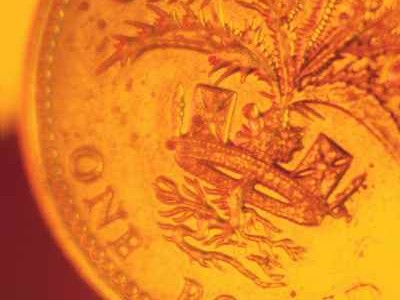Blue-Skies Research as a term may conjure up images of a senile, old, scatter-brained acientist, but is a form of curiosity-driven science.
John Tyndall was a man who followed his curiosity for its own sake, not for where it might lead.

Blue-Skies Research as a term may conjure up images of a senile, old, scatter-brained acientist, but is a form of curiosity-driven science.
John Tyndall was a man who followed his curiosity for its own sake, not for where it might lead.

At the heart of the British war effort was the development of mustard gas at a top-secret military base in North Wales.

Following on from the Hereditary considerations, GM Crops are feared and distrusted by many with good cause.
The way to combat that fear is through effective public engagement. And perhaps surprisingly, one of the best examples of that comes from over 200 years ago and the scientist who, at the time, was perceived to be a dangerous villain.

England, particularly London has been home to many of science’s great success stories including those of Humphry Davy.
At the time, Mary Shelley’s fears were not widely shared. The majority of the public remained in love with science for another century.

Many of us know of Burke and Hare, the infamous grave robbers, but John Hunter and his pioneering surgery was also a grave robber.
Scientific progress is valuable, vital even. It might be that occasionally we reveal a monster. Understanding the atom did indeed give us the nuclear bomb, but that knowledge also opened up so many other opportunities.

The notorious Newgate Jail was the final residence of many unfortunates in the 19th century, on their way to the gallows.
Professor Giovanni Aldini was a scientists convinced he could restore life through the application of electrical current.

All work done by British scientists is checked and validated by other scientists, in a process known as Peer Review, before publication.
This provides a method of checks to ensure the highest quality of scientific research.

The Scientific Method, devised by Sir Isaac Neton, is a way to observe the natural world and develop and test theories to prove their veracity.
This method allowed the allies to break the Enigma, and subsequent Tunny, code at Bletchley Park.

Sir Isaac Newton was the first commoner to be buried in Westminster Abbey. He was a brilliant scientist who pioneered the Scientific Method.
Now, the prevailing scientific view was that sunlight must be perfect. This dated all the way back to Aristotle and the Ancient Greeks. How could something that comes from the heavens be anything other than perfect?

Henry Cavendish was not the sterotypical scientist, but he was a great experimental man of science and instrumental forming the Royal Institution.
Count Rumford of Bavaria, Henry Cavendish and Joseph Banks were the three men who founded the Royal Institution.
By continuing to use the site, you agree to the use of cookies. more information
The cookie settings on this website are set to "allow cookies" to give you the best browsing experience possible. If you continue to use this website without changing your cookie settings or you click "Accept" below then you are consenting to this.